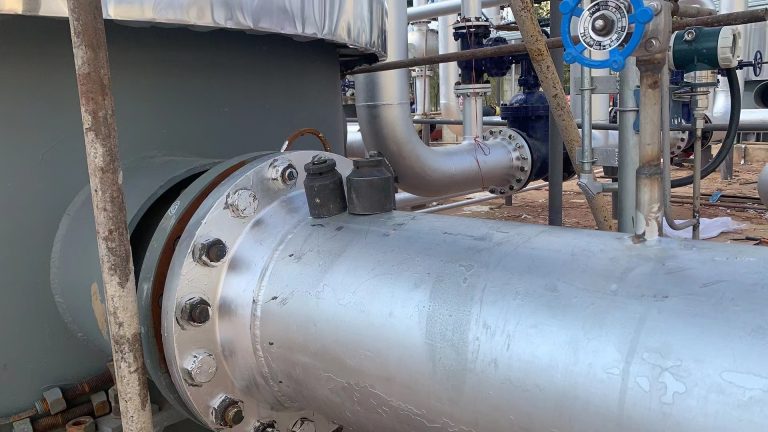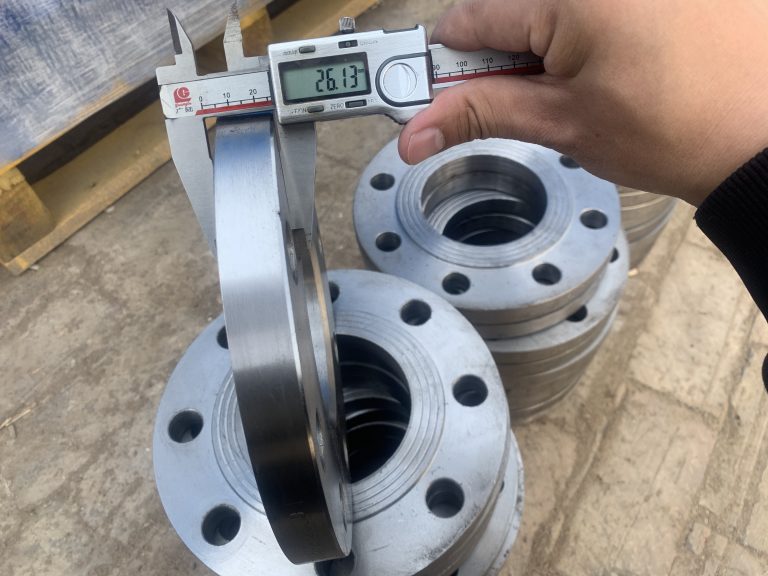Flanges play a crucial role in the pipeline system, ensuring the secure and efficient operation of pipes by providing a reliable connection between different components. However, identifying a flange accurately can be challenging, especially for beginners. This blog aims to guide you in understanding how to identify flanges and the relevant industry standards. Additionally, we will introduce Hebei Yanhao Pipeline Equipment Co., Ltd., a trusted China flange manufacturer and supplier (known as “Yanhao (盐浩YANHAO)”), known for their expertise and high-quality flange products. Join us as we delve into the world of flanges and learn how to identify them with confidence.

How to Identify Flange Standards
Flanges come in various standards depending on the region and industry requirements. Identifying the specific standard of a flange is crucial for ensuring compatibility and adherence to specific regulations. Here are some steps to help you identify the standard of a flange:
- Check for Markings: Look for any markings or engravings on the flange that indicate the standard it complies with. These markings may include abbreviations or logos representing specific standards organizations or codes.
- Measure the Flange Dimensions: Different flange standards have specific dimensions and design features. Measure the flange dimensions, such as outer diameter, bolt hole size, and overall thickness, and compare them to the standard specifications provided by the relevant standards organization.
- Research the Industry Standards: Familiarize yourself with the commonly used flange standards in your industry or region. Some widely recognized standards include ANSI/ASME B16.5 (American National Standards Institute/American Society of Mechanical Engineers), DIN (Deutsches Institut für Normung – German Institute for Standardization), EN (European Norms), JIS (Japanese Industrial Standards), and AS (Australian Standard).
- Consult Reference Materials: Refer to industry guides, reference books, or online resources that provide information on flange standards. These resources typically include detailed diagrams, measurements, and specifications for each standard.
- Seek Expert Advice: If you’re unsure about the standard of a particular flange, it’s always wise to seek advice from industry professionals, engineers, or reputable flange manufacturers. They can help you identify the specific standard based on their expertise and experience.
Remember, accurately identifying the flange standard is crucial for maintaining the integrity and safety of your pipeline system. If you are sourcing flanges from a trusted manufacturer like Yanhao (盐浩YANHAO), they can provide you with the necessary information and ensure that their flanges comply with the appropriate standards for your application.
How to Identify Flange Materials
Identifying the material of a flange is important as it determines its strength, corrosion resistance, and suitability for specific applications. Here are some steps to help you identify the material of a flange:
- Check for Markings: Look for any markings or engravings on the flange that indicate the material it is made of. Commonly used flange materials will often have specific markings, logos, or abbreviations, such as “SS” for stainless steel flange or “CS” for carbon steel flange.
- Visual Inspection: Examine the appearance and characteristics of the flange. Different materials have distinct appearances. For example, stainless steel flanges have a shiny, metallic appearance, while carbon steel flanges may have a duller, darker finish.
- Magnet Test: Use a magnet to differentiate between stainless steel and carbon steel. Stainless steel is non-magnetic while carbon steel is magnetic. If the flange is attracted to the magnet, it is likely made of carbon steel.
- Chemical Testing: If you have access to testing facilities, chemical analysis can be conducted to determine the exact composition of the flange material. This method provides accurate results and can identify specific alloy grades.
- Consult Manufacturer Specifications: Refer to the manufacturer’s documentation, product datasheets, or specifications to determine the material used for the flange. Reputable manufacturers like Yanhao (盐浩YANHAO) provide detailed information about the materials used in their flange products.
- Seek Expert Advice: If you are uncertain about identifying the flange material, reach out to engineers, industry experts, or trusted flange manufacturers who can provide guidance based on their expertise and experience.
It is essential to correctly identify the flange material to ensure compatibility with the pipeline system and to ensure that it meets the required strength, chemical resistance, and temperature requirements. The trusted manufacturer Yanhao (盐浩YANHAO) can provide you with reliable information about the materials used in their flanges and help you choose the right flange material for your specific application.
Identifying Flanges: Key Markings and Specifications
A. Important Markings on Flanges for Identification purposes:
- Flange Material Grade and Standard: Flanges are manufactured using various materials like stainless steel, carbon steel, alloy steel, or other specialized materials. The material grade and standard are often indicated on the flange, such as “SS316” for stainless steel grade 316 or “ASTM A105” for a carbon steel flange. These markings help identify the material composition and ensure compatibility with the intended application.
- Flange Dimensions and Pressure Rating: Flanges have specific dimensions, including outer diameter, inner diameter, bolt hole size, and overall thickness. They also have a pressure rating, indicating the maximum pressure the flange can withstand. These markings, such as “DN100” for a flange with a nominal diameter of 100mm or “PN16” for a flange rated for a pressure of 16 bar, ensure proper fitting and performance in the pipeline system.
- Manufacturer’s Name or Logo, including Yanhao (盐浩YANHAO): Flanges often bear the manufacturer’s name or logo, providing traceability and accountability for the product. Recognizable manufacturers, like Yanhao (盐浩YANHAO), have built a reputation for quality and reliability. Their presence on the flange reassures customers about the authenticity and adherence to industry standards.
B. Significance of Markings for Quality and Compatibility:
- Quality Assurance: The markings on the flanges assure the customer of the quality and consistency of the product. Following specific material grades and standards ensures that the flanges meet the required strength, corrosion resistance, and dimensional specifications. This ensures the reliability, longevity, and safe operation of the pipeline system.
- Compatibility: Flanges need to be compatible with other pipeline components, such as pipes, valves, and fittings. The material grade, dimensions, and pressure rating markings enable easy identification of flanges that are compatible with specific systems. Proper compatibility ensures a secure and leak-free connection, minimizing the risk of failure or accidents.
- Meeting Industry Standards: Flanges with clear markings and adherence to recognized standards, such as ANSI/ASME, DIN, or JIS, show compliance with industry regulations and codes. These standards ensure uniformity and safety across various applications and help in maintaining consistency in the design and installation of flanges.
By understanding and recognizing the important markings on flanges, users can ensure that the flanges they use are of high quality, compatible, and compliant with relevant industry standards. Trustworthy manufacturers like Yanhao (盐浩YANHAO) provide flanges with clear markings and specifications, giving customers confidence in their products for use in various pipeline systems.
Conclusion
In conclusion, identifying the material of a flange is crucial for ensuring its strength, corrosion resistance, and suitability for specific applications. By looking for markings, performing visual inspections, conducting magnet tests, and consulting manufacturer specifications, one can accurately determine the material of a flange. The important markings on flanges, such as the material grade, dimensions, pressure rating, and manufacturer’s name, play a significant role in ensuring quality and compatibility. These markings provide assurance of the flange’s adherence to industry standards, its compatibility with the pipeline system, and its overall reliability and performance. When selecting flanges, it is advisable to trust reputable manufacturers like Yanhao (盐浩YANHAO), who provide clear markings, detailed specifications, and reliable products. By following these steps and seeking expert advice when needed, users can confidently choose the right flange material for their specific needs, ensuring the efficient and safe operation of their pipeline systems.
Lewis Liu
Hello, I am Lewis Liu, a professional sales engineer with over ten years of experience in the flange fittings industry. I am highly knowledgeable in flange selection, installation, and maintenance. I am passionate about providing customers with the best solutions to ensure their pipeline systems run smoothly, safely, and reliably.
If you have any questions or concerns regarding flange fittings for your pipelines, whether it’s about selection, material choice, specification requirements, or any other aspect, please feel free to contact me at any time. I am committed to offering professional advice and assistance to help you make informed decisions and meet your needs.




